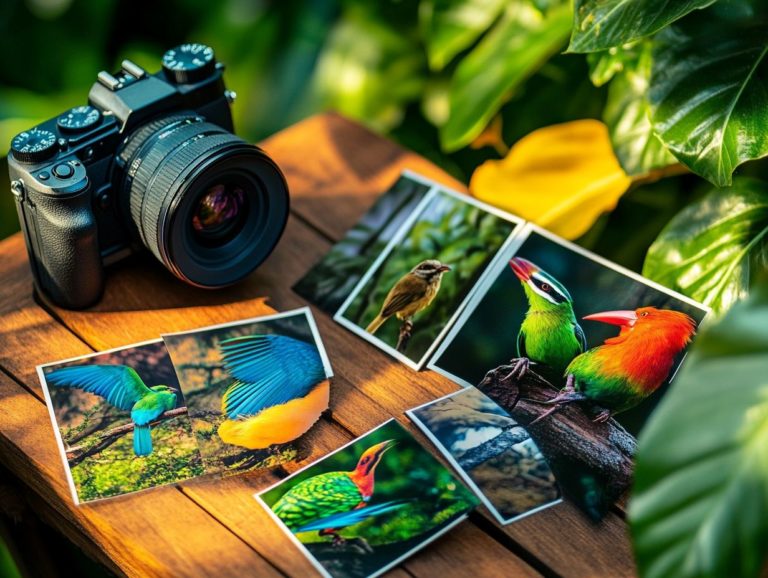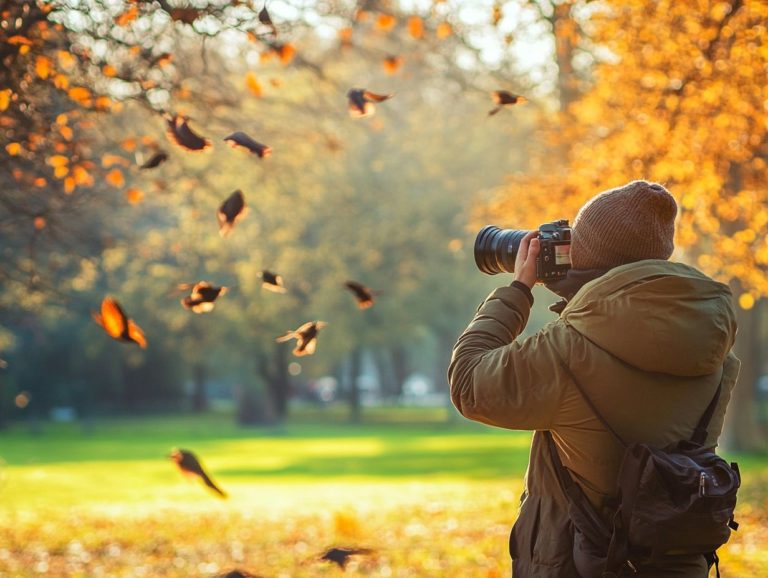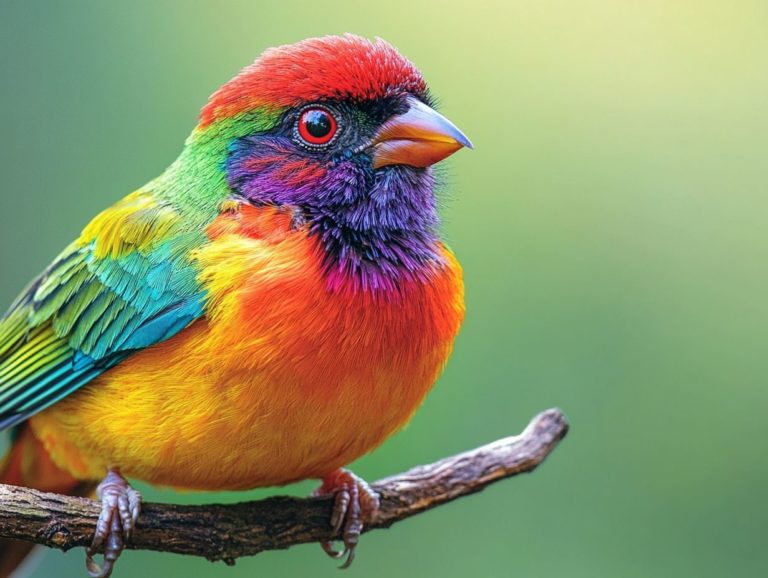How to Use a Gimbal Head for Bird Photography
For bird photographers, achieving that perfect shot demands a delicate balance of stability and swift maneuverability.
A gimbal head transforms this endeavor, offering a seamless connection between your camera and lens that can significantly elevate your shooting experience.
This guide will explore the exciting benefits of utilizing a gimbal head, provides insights on selecting the right one, and shares essential tips for setting it up and using it effectively in the field.
Whether you’re striving for sharp images of majestic birds in flight or seeking to minimize physical strain, this information will empower you to enhance your bird photography skills.
Contents
- Key Takeaways:
- What is a Gimbal Head?
- Benefits of Using a Gimbal Head for Bird Photography
- Choosing the Right Gimbal Head
- Setting Up and Using a Gimbal Head
- Tips for Using a Gimbal Head in the Field
- Frequently Asked Questions
- What is a gimbal head and why is it useful for bird photography?
- How do I mount my camera onto a gimbal head?
- What is the proper way to balance my camera on a gimbal head?
- Can I use a gimbal head with any type of camera or lens?
- How do I use a gimbal head to track moving birds?
- Do I need to use a tripod with a gimbal head for bird photography?
Key Takeaways:
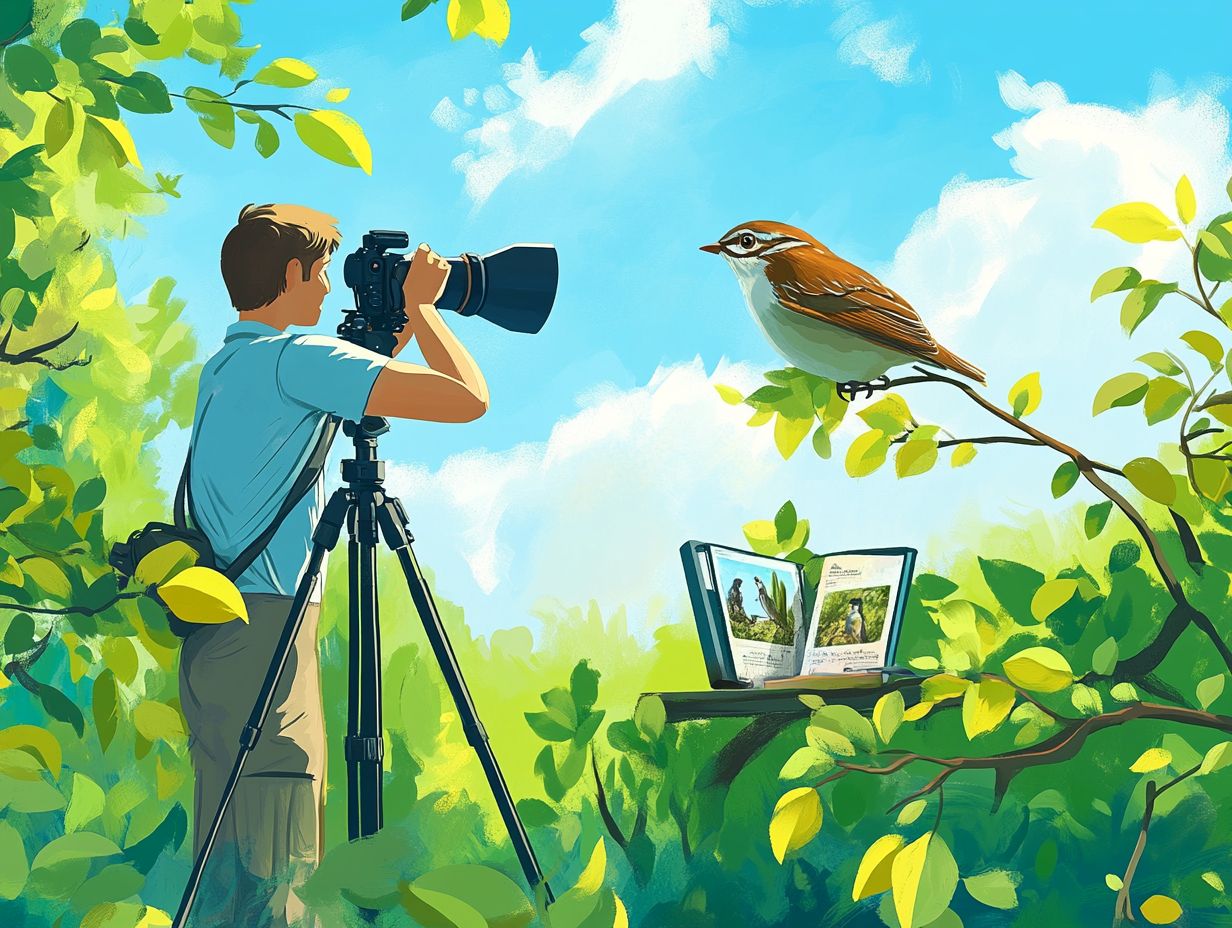
- A gimbal head provides stability and maneuverability for capturing birds in flight or other fast-moving subjects.
- A gimbal head relieves strain on your arms and shoulders, allowing for longer shooting sessions and better overall results.
- When choosing a gimbal head, consider factors such as weight capacity, compatibility with your camera and lens, and ease of use.
What is a Gimbal Head?
A gimbal head is an advanced camera support that helps you keep your camera steady, tailored for photographers and videographers like you, who demand both flexibility and stability when handling heavy camera gear, such as a Canon EOS 7D paired with a SIGMA 150-600mm lens.
This remarkable tool gives you the power to achieve fluid motion in both vertical and horizontal adjustments, making it critical for capturing fast-moving subjects like birds.
With its effortless pan and tilt capabilities, a gimbal head facilitates quick adjustments in the field, ensuring you can photograph even the most elusive subjects with remarkable precision.
Benefits of Using a Gimbal Head for Bird Photography
Utilizing a gimbal head elevates your bird photography experience, offering distinct advantages for both seasoned professionals and passionate enthusiasts.
The stability a gimbal head provides is essential when capturing images of birds, especially when using special lenses that allow you to take pictures from a distance. It allows for effortless tracking of fast-moving subjects, eliminating the fatigue often felt with traditional camera supports.
This combination of stability and maneuverability lets you seize breathtaking images even in demanding conditions, making it a critical tool in your wildlife photography arsenal.
Stability and Maneuverability
One of the standout benefits of a gimbal head is its remarkable stability and maneuverability, both of which are crucial for capturing those fleeting wildlife moments. Unlike traditional tripods, a gimbal head lets you pan and tilt with effortless grace, making it a breeze to track moving subjects, like birds soaring through the sky. The quick-release functionality is a game changer, allowing you to adjust your gear swiftly without wasting precious time.
This stability dramatically improves your photos, ensuring your images remain sharp even in challenging conditions, such as gusty winds or fluctuating light. To maximize your maneuverability, practice fluid movements while keeping your body steady; this will lead to a smoother tracking experience. Maintaining a low center of gravity by kneeling or crouching can also significantly improve your balance.
Using a fluid video head offers similar advantages, accommodating quick adjustments during fast-paced action. To optimize your setups, opt for lightweight yet sturdy tripods and ensure your gear is well-balanced. This approach can dramatically enhance stability, paving the way for professional-grade results in the field.
Unlock the secret to stunning shots with a gimbal head, and take your bird photography to the next level!
Reduced Strain on Arms and Shoulders
A gimbal head is a device that helps stabilize your camera for smoother shots. It alleviates strain on your arms and shoulders, making it invaluable during long wildlife photography sessions. You know the fatigue that follows after wielding a heavy camera and lens combo, like the Canon EOS 7D paired with a SIGMA 150-600mm telephoto? With a gimbal head, you achieve a balanced weight distribution that enhances comfort and boosts your shooting accuracy. This is especially essential when capturing elusive, fast-moving subjects.
Beyond managing weight, the gimbal head offers vertical adjustment and friction control. This enables you to fluidly track your subjects without constantly shifting your stance. You can maintain a comfortable shooting position, even while waiting patiently for that perfect moment. You ll feel the difference when you adjust the tension to match your gear’s weight, reducing the effort needed to maneuver the camera.
By harnessing the head s capabilities for swift pan and tilt movements, you can quickly capture dynamic angles that will make your shots stand out all without compromising your comfort.
Choosing the Right Gimbal Head
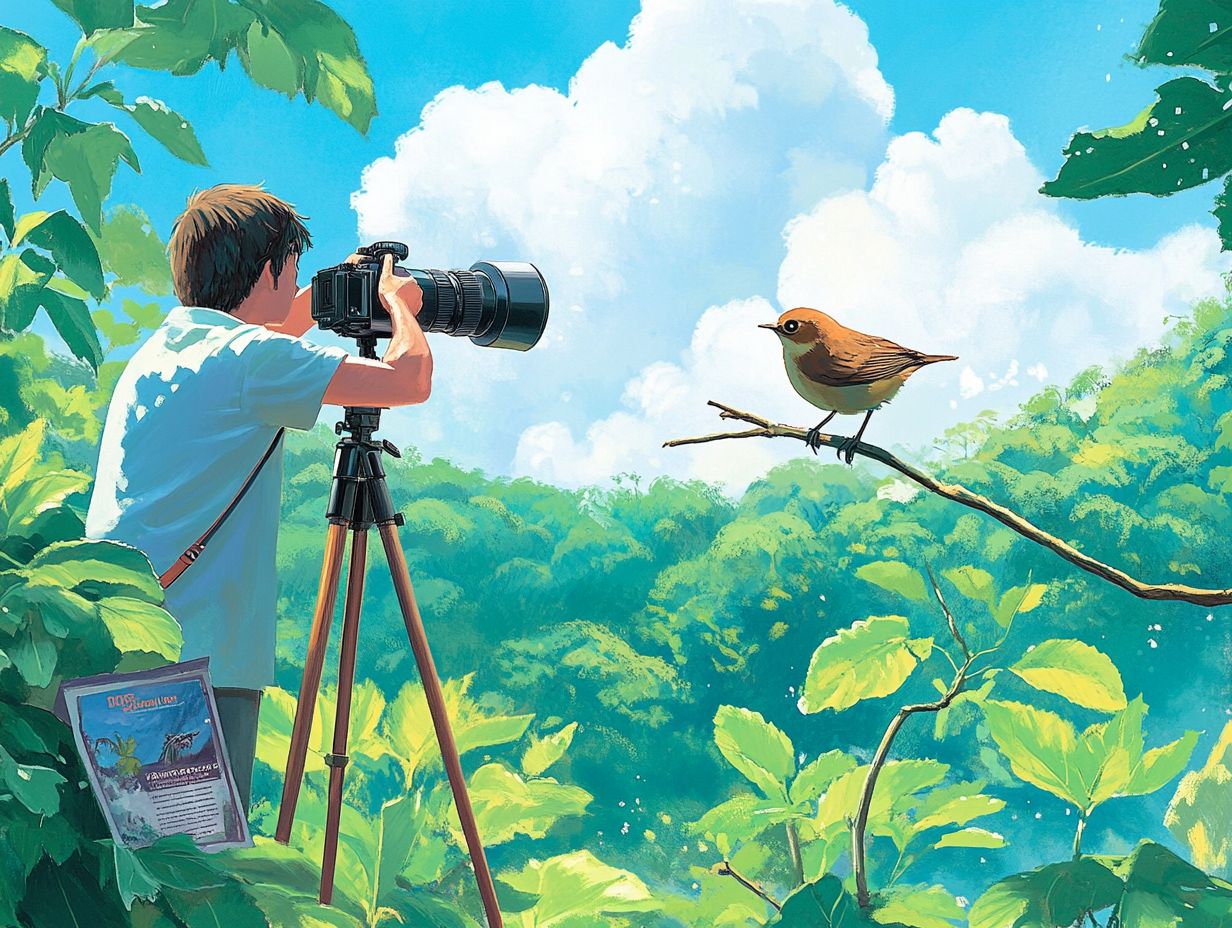
Selecting the right gimbal head is essential for photographers looking to elevate their wildlife photography experience. The right choice significantly impacts image quality, particularly with heavier camera systems.
Consider key factors such as compatibility with your gear. Whether you prefer a Benro GH2, Wimberley head, or Feisol CT-3472, ensure that the gimbal head has the appropriate weight capacity to support your camera and lens setup effectively. Think about the smooth movement that fluid video heads provide, which can be particularly advantageous when tracking fast-moving subjects.
Factors to Consider
When hunting for the perfect gimbal heads, several key factors will ensure you achieve optimal performance and compatibility with your camera setup.
First, consider weight capacity. If your setup leans toward the heavier side, a sturdier gimbal head is necessary to maintain stability. Features like friction control are vital as they enable smoother adjustments when tracking moving subjects. Understand the specific needs of your photography style whether you prefer a fluid video head for videography or a traditional gimbal head for capturing stunning stills.
Ease of use can’t be overlooked. A poorly designed gimbal can turn your shoot into a frustrating experience, especially in dynamic settings. Also, consider the range of adjustments available. Many photographers find tilt and pan adjustments invaluable for achieving that elusive perfect angle.
As you compare different models from reputable brands, you ll notice that some gimbal heads provide superior stability and ease of adjustment, significantly enhancing your shooting experience. Ultimately, investing time in grasping these features will elevate both the quality of your shots and your overall efficiency in the field.
Setting Up and Using a Gimbal Head
Setting up and using a gimbal head effectively is crucial for unlocking its full potential in wildlife photography. This ensures your camera support system operates at peak performance.
First, mount your camera and telephoto lens to achieve the ideal balance. This step is vital for ensuring ease of movement and stability while shooting. Next, fine-tune the tension settings on your gimbal head to enhance your ability to pan and tilt smoothly. This enables you to track fast-moving subjects like birds with remarkable fluidity.
Get your gimbal head ready and start capturing breathtaking wildlife shots today!
Mounting the Camera and Lens
Mounting your camera and lens on a gimbal head is essential for successful wildlife photography.
When using a heavy telephoto lens, like the SIGMA 150-600mm, the quick release feature makes it easy to secure and adjust your setup. This saves time in the field and helps you achieve the perfect balance for capturing stunning images of birds in flight.
Getting the right weight distribution is crucial. An unbalanced setup can lead to fatigue and affect the quality of your shots.
Start by fitting the mounting plate snugly to your lens base. This keeps the center of gravity aligned with the gimbal s support.
Regularly check the balance after mounting. Familiarize yourself with the quick release mechanism for rapid adjustments during spontaneous moments.
This setup lays the groundwork for stability, ensuring smooth movements for capturing fast subjects.
Adjusting the Balance and Tension
Adjusting the balance and tension of your gimbal head is crucial for achieving optimal stability when photographing wildlife.
Proper balance keeps your camera steady, allowing for smoother pan and tilt movements, which is vital when tracking fast-moving subjects.
Carefully adjusting the tension settings can dramatically improve how responsive your setup feels, especially with equipment like fluid video heads for videography.
These adjustments enhance performance and significantly reduce fatigue during extended shooting sessions.
Every second matters for wildlife photographers, so ensure your camera responds effortlessly to your commands to capture that perfect shot.
Begin by securing your camera and lens onto the gimbal, positioning them at the center of the pivot point.
Loosen the side clamp to allow for movement, then balance the system by adjusting your camera until it remains level without effort.
Finally, adjust the tension knob for a comfortable resistance while panning and tilting.
A well-balanced setup stabilizes your shot and makes tracking elusive wildlife much easier.
Tips for Using a Gimbal Head in the Field

Using a gimbal head in the field can greatly enhance your wildlife photography.
By mastering your camera positioning and making precise adjustments, you can seize every fleeting opportunity to photograph fast-moving subjects with remarkable clarity.
Focus on maximizing sharpness and composition while using a gimbal head, and get ready to elevate your photography like never before!
Each shot becomes not just a photograph, but a masterpiece.
Techniques for Capturing Birds in Flight
Capturing birds in flight with a gimbal head requires techniques that enhance stability and responsiveness. This gear allows fluid movement, helping you track birds without losing focus.
Pre-focus on likely flight paths for better chances of sharp, dynamic images. Keep an eye on lighting; soft, flattering light can enhance your photographs.
Use the rule of thirds for captivating images and allow space for subjects to glide through the frame. Timing is key understand peak activity periods to improve your success rates.
Tweak the drag settings on your gimbal head to optimize weight distribution. Fine-tune your gear’s balance to capture fleeting moments effortlessly.
Maximizing Sharpness and Composition
Maximizing sharpness and composition is crucial for stunning wildlife photos. A perfectly balanced camera on the gimbal head leads to stable shots, especially with heavy gear like a telephoto lens.
Mindful compositional elements enhance your wildlife photography experience. Adjust your shutter speed to sync with your subject s movement to reduce motion blur.
Control your aperture settings to manage depth of field, making the subject stand out against a blurred background. Environmental factors, like lighting and weather, also play a vital role.
Shooting during the golden hour enriches colors and adds a soft glow. Stay aware of changing elements around you to adapt your technique for optimal sharpness and composition.
Frequently Asked Questions
What is a gimbal head and why is it useful for bird photography?
A gimbal head is a tripod attachment that balances heavy camera equipment. It allows smooth movement in all directions, making it perfect for capturing birds in flight.
How do I mount my camera onto a gimbal head?
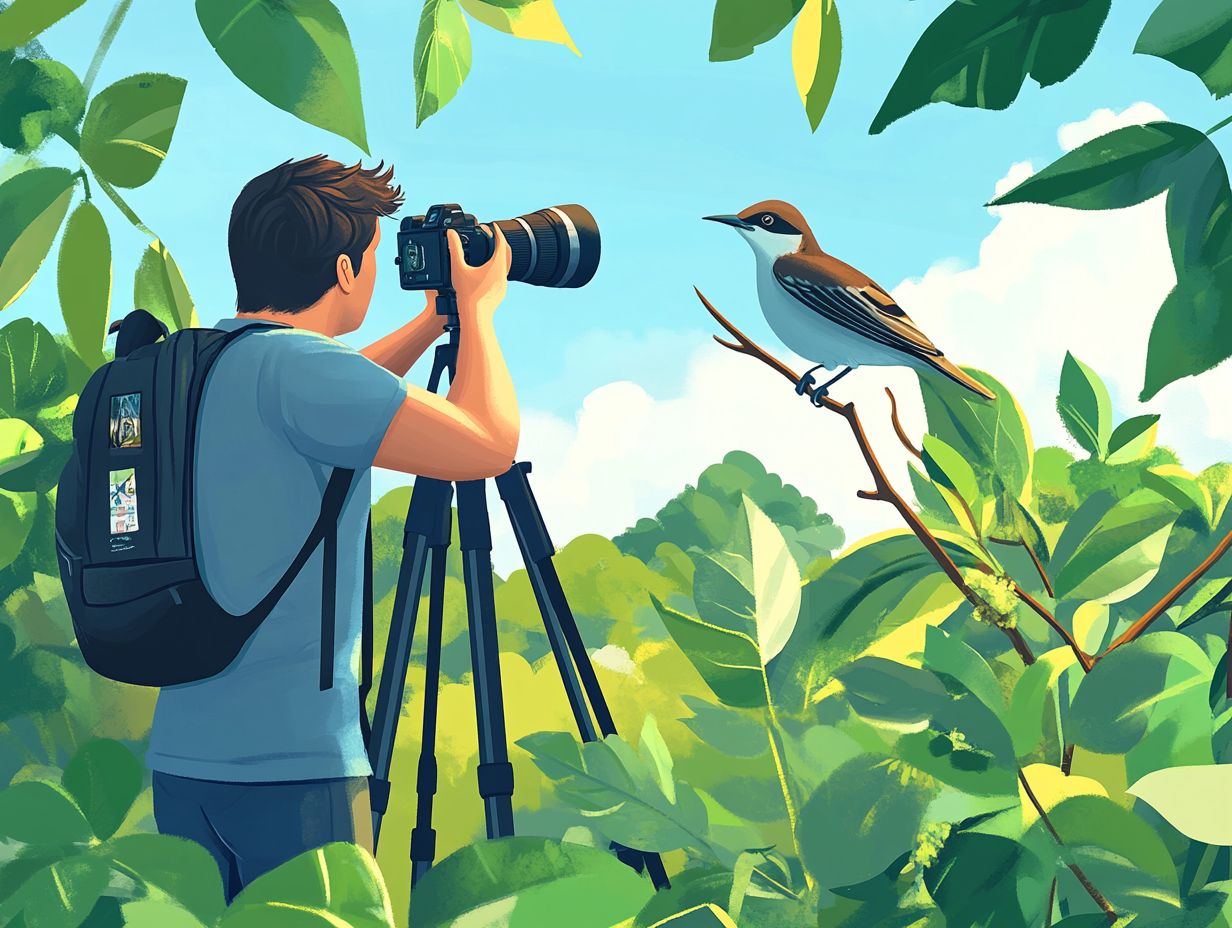
First, attach the quick release plate to your camera’s bottom. Slide it into the gimbal’s quick release clamp, and tighten the knob to secure it.
What is the proper way to balance my camera on a gimbal head?
Adjust your camera’s position on the quick release plate until balanced. You can also tweak the knobs on the gimbal head for fine-tuning.
Can I use a gimbal head with any type of camera or lens?
Most gimbal heads fit various camera and lens combinations. Always check the specific gimbal’s weight and size limits.
How do I use a gimbal head to track moving birds?
Position the gimbal head to point toward the bird’s expected movement. Use the gimbal s fluid motion to follow the bird, keeping the camera steady and in focus.
Do I need to use a tripod with a gimbal head for bird photography?
A tripod isn’t strictly necessary when using a gimbal head. However, it can add stability and support.
This is especially helpful with longer or heavier lenses. Choose a sturdy tripod for the best results!


